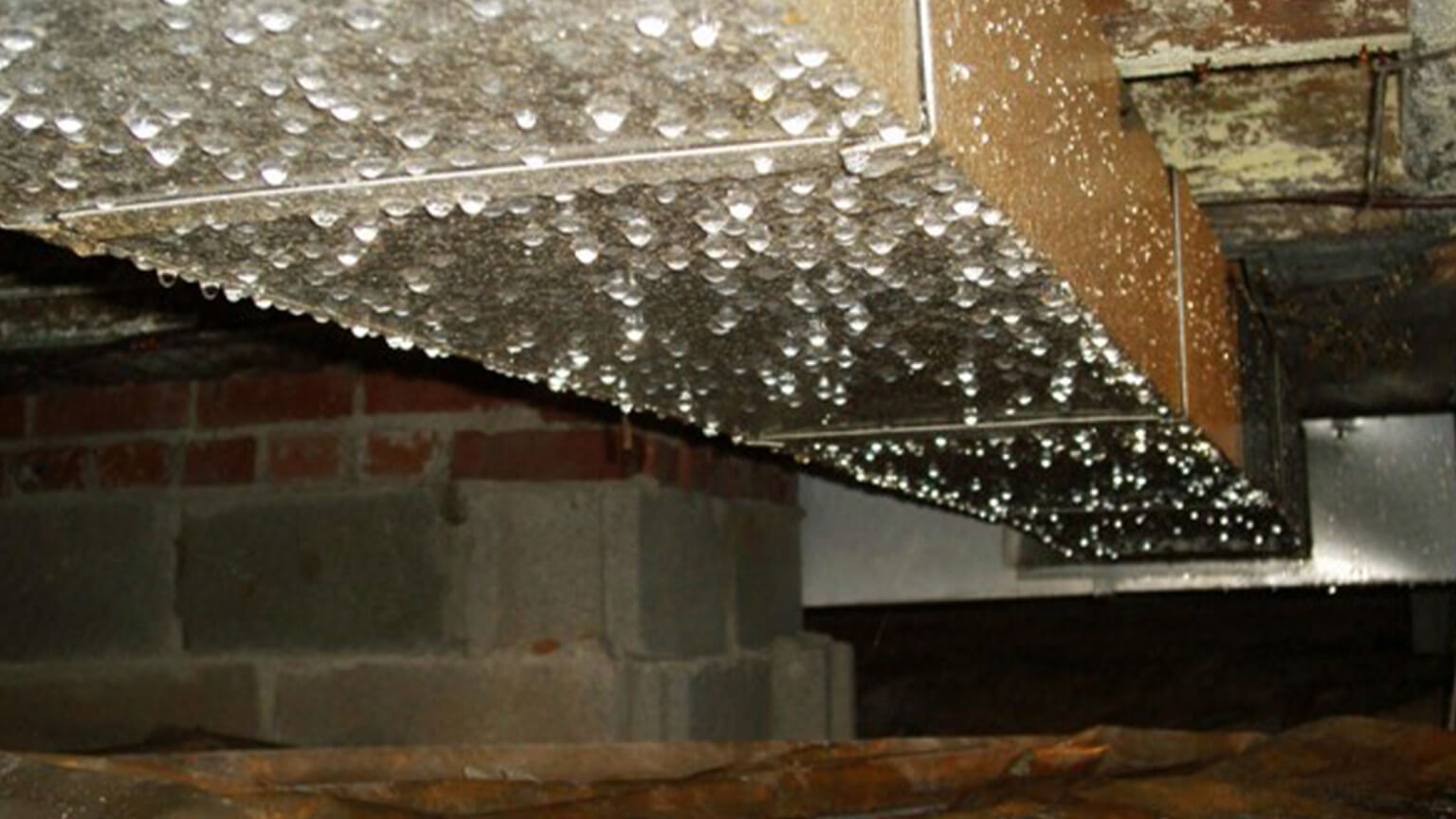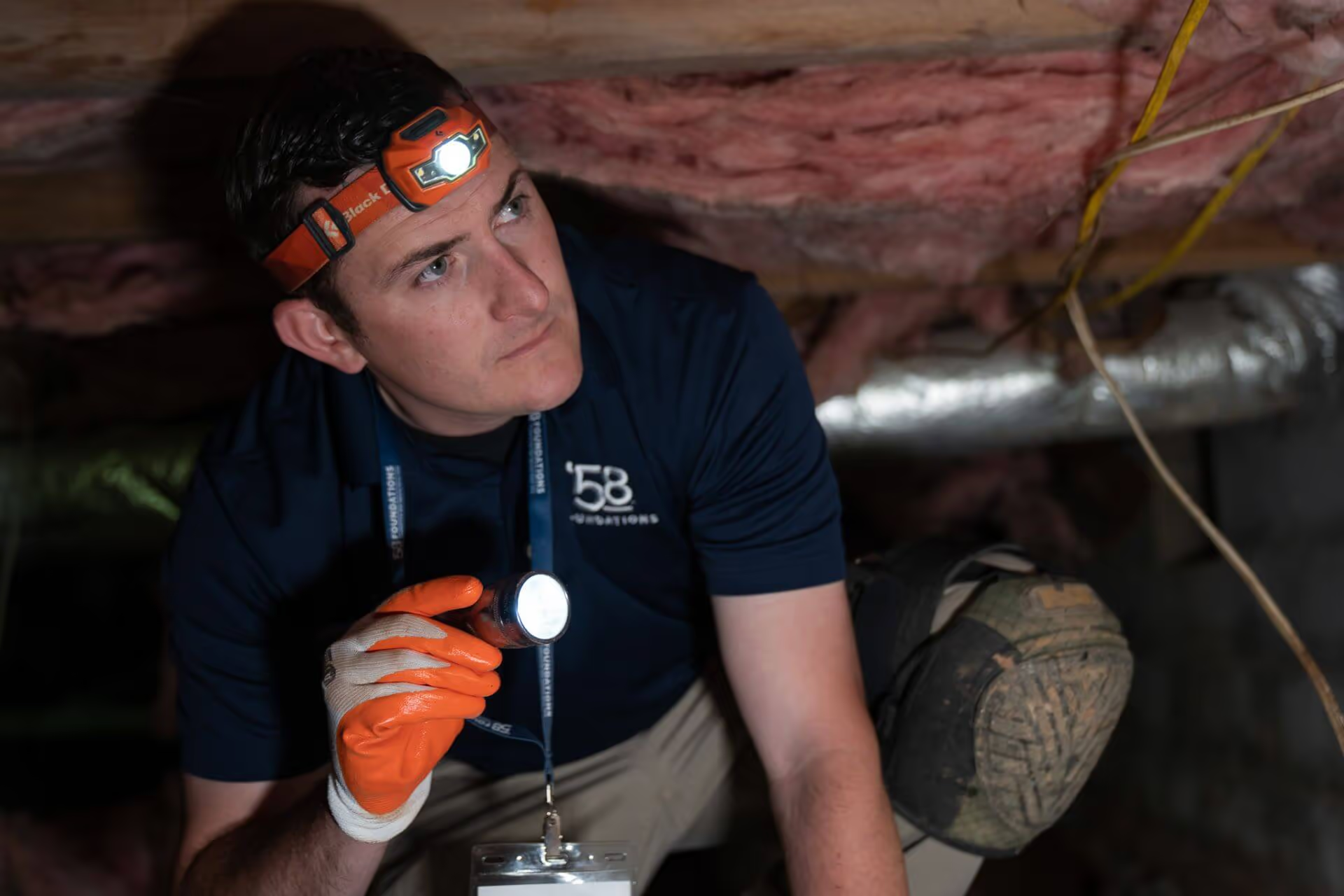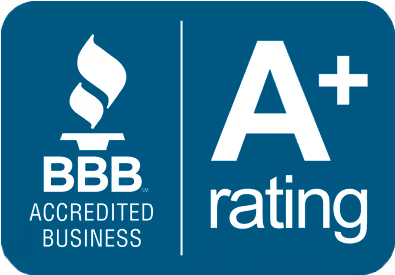
When summer hits, so does the humidity. Homeowners across the Southeast and Mid-Atlantic expect the air to feel a little heavier this time of year, but when that heavy feeling lingers inside your home, even with the AC running, it may be coming from somewhere else: your crawl space.
So how do you know whether it’s just seasonal humidity or a deeper moisture problem hiding below your home? The answer matters more than you might think.
Summer indeed brings higher humidity levels, but even when that’s considered “normal,” it can still cause real damage to your crawl space. Humidity above 50% may seem harmless, but over time, it can have serious effects on the structure of your home.
When moisture lingers below your floors, wood framing can start to soften or rot, insulation can break down, and mold can begin to grow on hidden surfaces. You might not see it right away, but you’ll start to feel it as musty odors move into your home or your floors begin to warp or sag.
Humidity also creates the perfect environment for pests. Termites, silverfish, and rodents are all drawn to damp areas, especially crawl spaces. Even your HVAC system isn’t safe. Condensation and rust can build up on ducts and pipes, leading to expensive repairs later on.
The bottom line: your crawl space was never designed to handle ongoing moisture, even if it’s just from humid air. Without the right protection in place, that “normal” summer humidity can quietly turn into a costly, long-term problem.
Here are some clear signs that your crawl space isn’t just humid; it’s holding on to unwanted moisture:
If you’ve noticed more than one of these issues, it’s likely not just the weather. Moisture may be entering from the ground or through open vents, and it won’t go away on its own.
Even without a major water leak or flooding, crawl spaces can collect moisture in ways that aren’t always obvious. During the summer, warm, humid air from outside enters through crawl space vents, where it meets the cooler surfaces under your home. That temperature difference causes condensation, leaving your crawl space damp day after day.
Another major source is the ground itself. If your crawl space doesn’t have a proper vapor barrier, moisture can rise up from the soil and settle inside the space. This often goes unnoticed until it starts to affect the rest of your home.
Outside the crawl space, poor drainage around your foundation can also push moisture into the area. If your yard slopes toward the house, or your gutters and downspouts aren’t moving water away properly, excess rainwater can seep through the foundation walls or floor.
The result is a crawl space that never really dries out. Even without standing water, constant dampness creates the perfect environment for mold, wood damage, and pest activity. And because that air eventually moves upward into your living space, the problem rarely stays below ground.
The most effective solution is to seal your crawl space from the inside out. Here’s what that typically includes:
Trying to fight moisture with just a store-bought dehumidifier is like using a bandage on a leak, it won’t hold for long. The only real solution is to address the source.
If your home feels damp or musty this summer, don’t ignore it. A Certified Foundation Specialist from '58 Foundations & Waterproofing can assess your crawl space, identify the cause, and recommend the right solution for long-term protection.
We’ve been helping homeowners like you protect their homes for decades and our work is backed by a trusted Life-of-the-Structure Warranty.
Contact us today to schedule your free inspection and take the first step toward a cleaner, drier, healthier home.






We respect your privacy. By submitting, you authorize '58 Foundations and Waterproofing to reach you via call, email or text for information about your project needs. We will never share your personal information with third parties for marketing purposes. You can opt out at any time. Message/data rates may apply. Consent is not a condition of purchase. Privacy Policy